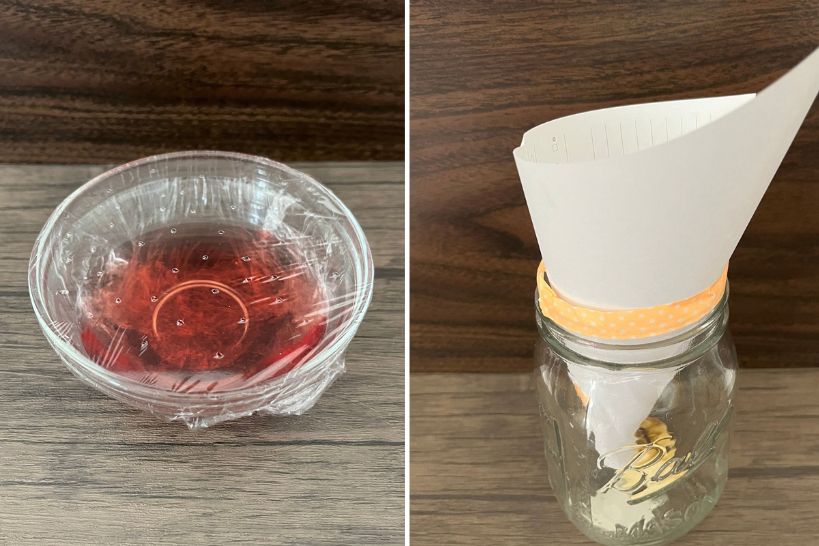Where do fruit flies come from? And more importantly, how do you get rid of them?
One of the sweetest parts of summer are those delicious fruits we get here during the summer months… but oh those pesky fruit flies! How do these little flies suddenly appear on our kitchen counters and how can we get rid of them without harming our fruits and our health?
There’s no doubt that fruit flies are unpleasant and annoying, but they’re not dangerous. The flies known as Drosophilia melanogaster (to use their scientific name) don’t bite and don’t carry viruses. What they can do, however, is contaminate your food, say with their eggs or with germs they might be carrying. Not exactly what you want in your kitchen! So, it’s important to eliminate them and stop them from multiplying, because they will and quickly at that! Female fruit flies lay up to 500 eggs in a single month.
Summer – The Best Time to be a Fruit Fly and Multiply!
There’s no better time than the summer to be a fruit fly here in Canada. Heat, humidity, and the sweet and tangy odours of fruits and veggies make fields, orchards, and open-air markets veritable hot spots for these little insects. Fruit flies are found everywhere around the world now thanks to the export of fruits and vegetables from warmer climates to more Nordic places. They may seem to appear out of nowhere, but they inevitably come from somewhere. Most of the time, they come home with you from the grocery store. You don’t see them, of course, as they haven’t hatched from their eggs, but give them five to six days in a balmy environment over 20°C and there they are. So, now you know why they seem to suddenly appear on the fruits and vegetables you bought and left to ripen on your kitchen counter.
How to Rid Your Home of Fruit Flies
Even though they are not harmful to humans, fruit flies can still get terribly annoying! You’ll be happy to know that there are some great tricks to fight back against the pesky Drosophila melanogaster!
1. Stop them at the incubation stage as soon as you unpack your groceries
One trick is to wash your fruits and vegetables by soaking them for a few minutes in a tub filled with water and two or three spoonfuls of vinegar. Once you’ve let them drip dry, it’s best to store them in the refrigerator to keep them from ripening too quickly in the summer weather. For fruits and vegetables that need to stay at room temperature (like bananas), wash them or wipe them down with a damp cloth to get rid of any fruit fly eggs. Just make sure you dry them off before you let them sit on the counter.
2. Keep your home environment dry
Fruit flies love humidity, so controlling them means eliminating as many humid environments as you can from your home. Avoid leaving wet dish towels or sponges near the sink, use planters to minimize the amount of exposed damp earth around your houseplants, and don’t leave your wet dishes out to drip dry.
3. Avoid leaving food out on the counter
Fruit flies just love leftovers. It’s one of their favourite places to lay eggs. So don’t wait to clean up the dishes and put away food after a meal, empty out your compost bin regularly, and most important, don’t leave any glasses around with a few sips of juice or wine at the bottom, or any other sugary or alcoholic drink either.
4. We did all that, but still have fruit flies…
If the fruit flies have already made themselves at home in your fruit bowl, there are ways to get rid of them (without having to use harsh chemicals).
- Figure out where they’re coming from if you can. Fruit flies reproduce where they find nutrients, so that means fruits and leftovers.
- Make fruit fly traps: Pour a little bit of cider vinegar, wine or beer in a bowl and then cover it with plastic wrap (try reusing the wrap from a box of fresh mushrooms for example). Poke a few holes in the film. The flies will be drawn to the smell, wiggle through the holes, and get trapped under the wrap. Put out a fresh bowl every day until they’ve all been captured. Be ready to see this through as it could take up to two weeks to catch them all.
- Kick it up a notch by adding dish soap to the cider vinegar. This makes the liquid at the bottom of your fly trap stickier, which makes it even harder to the fruit flies to escape.
- You can also drop a piece of really ripe banana in the bottom of a jar then roll up a sheet of paper to make a funnel. Place it in the jar skinny side down and use tape around the mouth of the jar to hold the funnel in place. The smell of the banana will attract the flies and the skinny end of the funnel will make it harder for them to escape. Replace this trap every three days or so.

Fruit flies are almost an inevitable part of summer. They’re everywhere and they multiply quickly on the fruits and vegetables we bring home from the grocery store and the market. Just think of them as a small price to pay for the joys of summer. These tricks should at least help you minimize the aggravation they can cause. So go ahead and enjoy the summer —and your fresh fruits and veggies too— without all those pesky miniature guests.
References:
https://www.cbc.ca/news/canada/calgary/fruit-fly-management-1.4824173
https://www.cbc.ca/news/canada/new-brunswick/fruit-fly-season-trap-1.5272977
